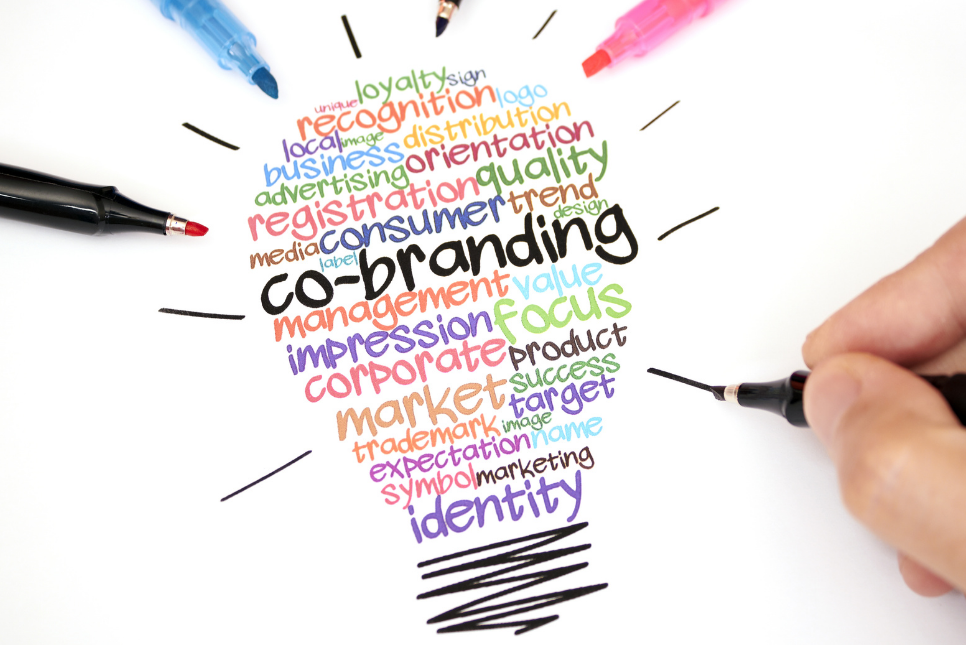

Learn how to
stay competitive
while marketing your brand and message…
when you don’t have the time, energy, or expertise!
With Emily in Paris, marketing has returned to the forefront. There are several strategies that this show demonstrated really well in the world of marketing.
One thing that it got right was how many different projects and clients a marketer has to juggle at once. Sometimes, these projects work closely together. Occasionally, they can even intermingle via co-branding and collaborative marketing projects.
The truth is that collaboration and co-branding are essential for a strong marketing strategy.
Let’s take a closer look at these concepts and how they help marketing.


Co-branding is the collaborative effort of two or more companies on a single project. The practice takes on a variety of shapes and sizes. The main result will always be the same, a strategic alliance between brands.
By combining forces, brands (or brands and influencers) can share markets. This allows them to grow each other’s brand awareness and increase/improve the associations people make with their company. Companies can capitalize on the audiences of completely unrelated brands.
The main advantage for co-branding is to capitalize on the audiences of two separate markets. Some of the most successful co-branding projects have involved wildly different companies. An exciting example of this is cellphone producer Huawei and luxury car company Porsche.
The two created a smartphone together in spite of different crowds. Porsche being for a high-end audience, Huawei was a budget manufacturer. The collaboration was explosive.
The result was an audience of high-end consumers exposed to Huawei in ways they may not have before. With temptations to buy a matching phone for their high-end car, both companies reaped the benefits of increased sales.
Collaborative marketing takes place any time two or more companies decide to work together on a project. Reaching a mutually beneficial agreement can take a while to accomplish. This is especially true when the companies have similar products. Once agreeing on how to split the profits and the workload of creating the product, the only thing left is to create, market, and sell it.
Other considerations may come into play here as companies partner their image with another brand. There will likely be no shortage of legal paperwork but the basics of it remain a simple agreement. Everything else will stem from that.
There are numerous examples of ways in which companies have collaborated successfully. Some of the more popular ones include:
The two brands offered entirely different products, but they realized they both appealed to a “late-night” crowd. As such, their partnership was one that spurred a great deal of positive buzz.
There have been a lot of partnerships between these two companies. Almost anytime Red Bull has an event, you’re sure to see footage from a GoPro with a Red Bull logo in the corner. Red Bull and GoPro both appeal to a crowd of adventure seekers so their team-up seemed perfect.
The amazing thing about co-branding like this is that it’s also a massive time-saver. Red Bull needed these cameras for their extreme events. Instead of figuring out how to buy or manufacture their own cameras, they can partner with GoPro. In exchange, they are no longer sinking costs into these products but are likely actually making money from them.
This is a rare example of rivals partnering with each other to collaborate. Though this is highly unlikely to happen for the profit of one or the other, Burger King did this to assist McDonald’s with a charity event. In 2019, McDonald’s had announced that they would donate $2 to charity for every Big Mac ordered.
Burger King followed by announcing they would not be selling their Whoppers for the day. In doing so, they encouraged their customers to purchase a Big Mac instead if they wished to.
It would be ridiculous for Nike to create a phone and participate in the smartphone industry. Yet many people use their phones on runs and other athletic activities they buy Nike products for. Spotting the commonality, Nike and Apple teamed up for Nike+.
The app helps track activities using smartphones and GPS technology. This gives people more reason to use Nike and Apple equipment alike.
If you’re looking for a company to assist in facilitating a collaboration or co-branding effort, Engage 2 Engage is here to help! Our dedicated team of professionals has experience dealing with all marketing needs and efforts. Lean on our experience to ensure that these projects are as lucrative as they possibly can be!
Learn more about the different programs we offer and reach out today to get the process started!


while marketing your brand and message…
when you don’t have the time, energy, or expertise!